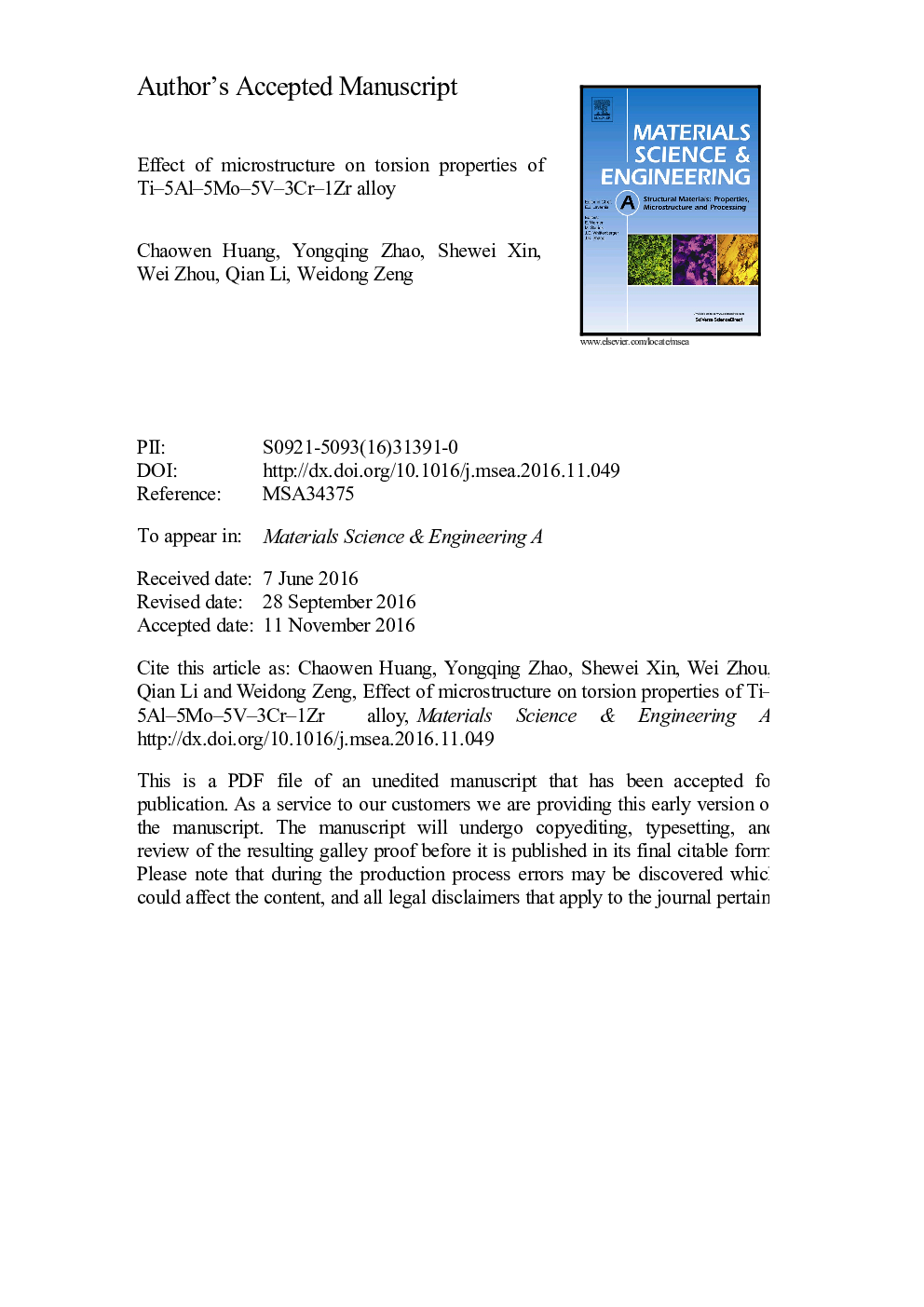| Article ID | Journal | Published Year | Pages | File Type |
|---|---|---|---|---|
| 5456393 | Materials Science and Engineering: A | 2017 | 27 Pages |
Abstract
A combination of transmission electron microscopy and scanning electron microscopy was used to study torsion deformation and fracture behaviors of Ti-5Al-5Mo-5V-3Cr-1Zr (Ti-55531) alloy with lamellar microstructure (LM) and bimodal microstructure (BM) at ambient temperature. The results indicate that torsion strength and ductility of BM are significantly lower than those of LM. Shear bands and dislocation tangles are mainly observed in secondary α (αs) lamellae for both microstructures. Furthermore, straight slip lines only exist in equiaxed primary α (αp) phase. The coarsening αs lamellae dominate the deformation of LM, while the deformation of BM is greatly controlled by equiaxed αp phase. Fractographs of LM and BM show a mixture fracture mechanism of microvoid coalescence and transgranular shear fracture. Besides, BM exhibits intergranular fracture mechanism. Thus, Ti-55531 alloy with BM is easier to be damaged than LM during torsion loading.
Related Topics
Physical Sciences and Engineering
Materials Science
Materials Science (General)
Authors
Chaowen Huang, Yongqing Zhao, Shewei Xin, Wei Zhou, Qian Li, Weidong Zeng,
